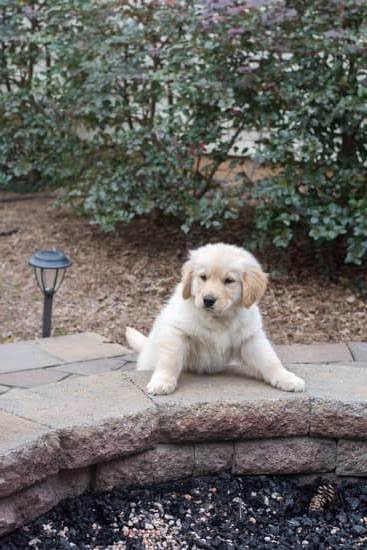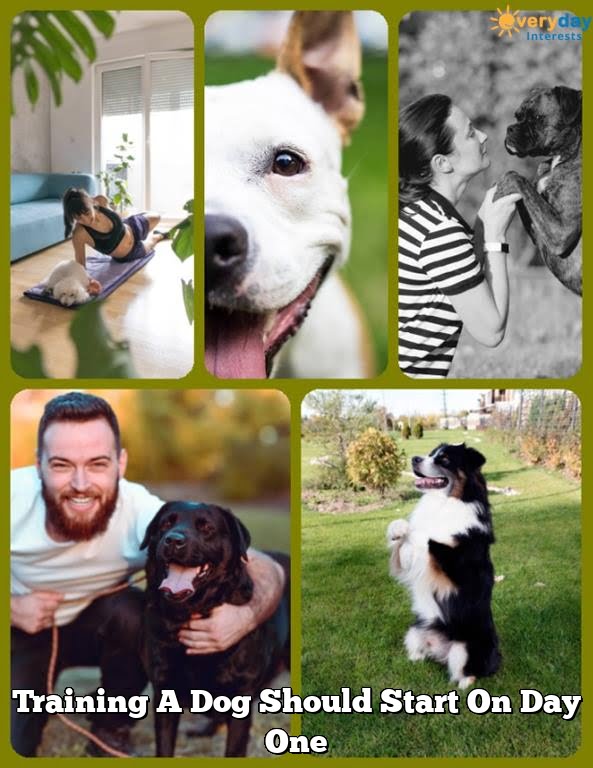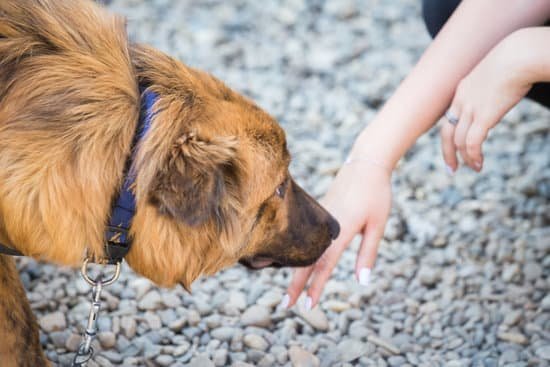Introduction
Dog Training in 10 Minutes a Day is an effective and rewarding way to teach your dog obedience and proper behavior. Trying to train your dog can seem overwhelming, but with a plan and dedication, it can be done in just 10 minutes a day. Consistency is key when it comes to training a pooch; the more consistent you are, the better results you will get out of training sessions.
The advantages of investing only 10 minutes a day into your dog’s training are tremendous. Not only will your pup learn obedience and respect quicker, but it also creates an effective bond between the two of you. As your pup picks up on commands, their confidence will increase and their overall behavior will improve significantly over time because their learning process is consistent. Your relationship with them will also become stronger as they associate positive interaction with desired behaviors.
In addition, Dog Training in 10 Minutes a Day can also reduce behavioral problems such as barking at inappropriate times or excessive potty accidents. A consistent program helps create clear boundaries that they must follow regardless of environment or situation so they know what is expected of them everywhere you go. The rewards for engaging in this practice far outweigh the effort put in since dogs respond quickly to well-structured routines based on consistency and clear instruction.
Understanding Dog Behavior
When it comes to dog training, understanding dog behavior is essential. Dogs communicate differently than humans, and reading their body language and facial expressions can help you better interpret what they’re trying to communicate. To get the most out of your 10-minute training sessions, make sure you learn how to recognize your pup’s unique behaviors.
Since the majority of canine communication occurs through visual cues, body language and facial expressions provide important information about how a dog is feeling—whether they’re happy or anxious, content or stressed. Of course, vocalizations also play a role in how dogs interact with each other and with humans. So learning how to interpret barks and whines is important for effective communication between you and your pup.
When observing your pup’s behavior, look for signs of stress that could indicate anxiety, fear or aggression. These can include trembling or shaking, tucked tail, furrowed brow, flattening of the ears or any sudden changes in movement patterns such as pacing or circling. Paying close attention to these behaviors while training can prevent a situation from escalating and keep both pet and trainer safe. With practice comes proficiency, so don’t worry if understanding and interpreting doggie behavior takes some time!
Creating and Utilizing an Effective Training Plan
Dog training can be successful when done in just 10 minutes a day. A key to success is identifying the type of training needed for an individual dog and the end result that owners wish to achieve. Once these things have been determined, a tailored plan can be created and implemented on a regular basis to ensure progress and results. The plan should consist of specific commands or tasks that will be repeated every day for no more than 10 minutes at a time. This could include basic commands such as “sit”, “stay”, “come” and “heel” as well as teaching behaviors like fetching, walking on a leash and rules around eating, sleeping or playing with other dogs and people. Owners should devote ample time each day to implement their training plan consistently to accelerate results and see improvements quickly. Additionally, it is important for owners to recognize even incremental progress as rewards and positive reinforcement not only helps motivate the animal but also strengthens the bond between dog trainer/owner. With determination and consistency, owners utilizing this method can successfully train their dog in less than 10 minutes per day!
What Training Method Should You Use?
Clicker training is arguably one of the best methods for dog training in 10 minutes a day. This approach relies on positive reinforcement, and it is based on repeatedly rewarding your dog with treats to reinforce certain behaviors. Many find clicker training to be highly effective because it both rewards positive behavior and discourages negative ones.
Reward-based training is another excellent method you can use in just 10 minutes a day. With this approach, you reward your pup with an appropriate treat whenever he demonstrates the desired behavior. This system makes use of positive reinforcement and encourages good behavior, while ignoring unwanted actions that your pup exhibits.
Both clicker training and reward-based methods have pros and cons, so it’s important to consider which method may be most appropriate for you and your dog before deciding on a specific tactic. If you are trying to get quick results from your training sessions or need something easy to implement during small daily intervals, then either of these two approaches might work well for you. However, if more extended training sessions are required or if more detailed commands are needed for a successful outcome, then other techniques such as crate training or dominance-based approaches may be better suited for the job. Ultimately it’s up to you decide which method best meets your particular dog’s needs and fits into your practice schedule.
Setting the Right Environment for Success
When it comes to setting up the right environment for dog training success, there are a few essential components. Having an area free of distractions and noise is key as well as making sure that the space is not too cramped or overcrowded. It’s also important to have the right equipment on hand – things like treats for rewarding good behaviour, training toys or any other items which will be used during the session. If a leash is required, make sure it fits properly and is comfortable for the animal. It can also be beneficial to use calming scents such as lavender or chamomile in order to relax both you and your pup before beginning training sessions. Finally, having a treat pouch, clicker (if used in training), and a reward-filled toy can add a bit of extra fun and enrichment during training time!
Employing Positive Reinforcement
The most successful and efficient way to train a dog using positive reinforcement is to divide the training period into smaller “chunks”. Start with a 10 minute session each day and focus on particular commands or tricks. Make sure to make the sessions fun by providing your pup with plenty of verbal praise, treats, or toys that they can use as rewards. You should always end the session on a positive note, as pup’s learn better when they associate their new behaviors with happy experiences. It is important to stay consistent with training so your pup has time to process what is being taught and can retain what has been learned. Training should be done in a quiet place so you don’t distract your pup. Provide just enough structure during training sessions but also allow for free exploration at times, as this will help keep them engaged and motivated. As pup’s begin to repeat certain commands correctly, slowly increase the difficulty level in order to challenge them throughout the training process.
Promoting Consistency
Having consistency in the training process is key for effective dog training. To promote habit formation in dogs, it is important for owners to provide cues that are consistent and repeatable. Cues can be verbal commands such as “sit” or “stay”, or cues can be physical such as hand signals. It is crucial for owners to consistently use the same cues each time a behavior is expected so that dogs understand what is expected of them.
In addition to being consistent in providing cues, reinforcing positive behaviors is paramount to having effective dog training sessions. Reinforcing behaviors with appropriate rewards such as treats, toys, or verbal praise will motivate and encourage dogs to repeat those behaviors again. Finally, whenever possible it is best to avoid punishment when training dogs. Punishment generally evokes fear responses which can make a dog more anxious and may impede learning development even further.
Addressing Common Dog Training Challenges
When it comes to dog training, one of the most common challenges owners face is barking. As their best friend, it’s important to be patient and exercise patience when trying to address barking behaviors in your pooch. It can help to give a verbal command that your pup understands, such as “no barking” and associated it with a specific action or movement. If you reward your pup when he stops barking, this will also help him to associate being quiet with receiving rewards which may encourage better behavior in the future.
Jumping is another difficult behavior for some dogs but again consistency is key when addressing it. When your dog jumps up on you, stand up straight rather than petting him and give a firm verbal command of “No jumping”. You can provide positive reinforcement by rewarding him when he stops jumping and sits politely instead.
Excessive licking can be an issue with some dogs too, usually caused by anxious or stress-related behaviors such as separation anxiety or boredom. It can be harder for puppies to learn this particular lesson due to their age but older dogs generally respond well if refused attention until they stop licking themselves or anything else inappropriately. Offering an alternative activity like playing a game, chewing on a toy or learning another trick through positive reinforcement should work in distracting them from the licking behavior over time
Conclusion
Dog training is a crucial part of ensuring that your canine companion is calm, happy and well-behaved. By dedicating just 10 minutes a day to training your dog will help them build on their confidence and obedience. Training helps dogs understand the type of behavior you expect from them and establishes what is acceptable or not. Doing just 10 minutes of training per day with consistent repetition can help owners make better progress in teaching their dogs commands without putting too much strain in terms of time needed. Ultimately, as you progress through your journey, it’s important to take the time to celebrate successes along the way and make sure that you show appreciation for any improvements made by your pup. Dog training in just10 minutes a day may seem small however, it can reap big rewards for pet parents who are dedicated to helping their furry family member to succeed.

Welcome to the blog! I am a professional dog trainer and have been working with dogs for many years. In this blog, I will be discussing various topics related to dog training, including tips, tricks, and advice. I hope you find this information helpful and informative. Thanks for reading!





